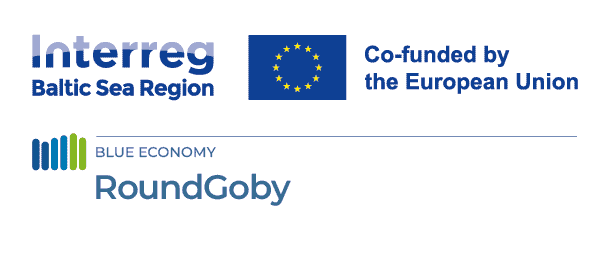
First round of test fishing completed!
01 July 2024
In Sweden, SLU cooperated with local fisher Bengt to catch round goby with modified fyke nets, traditionally used to catch eel. These nets now include escape hatches to minimize bycatch. They also tested the Latvian trap-nets especially designed to catch round goby.
In Latvia, commercial fishing of round goby has been going on for some time, using gill nets, trap-nets and fykes. To compare the different fishing gear, Latvia and Sweden exchanged gear and cooperated during the test fishing phase.
The results were varied but promising. In Latvia, fishers caught 37 kg of round goby using trap-nets. The species composition was very similar in both test fishing areas, with flatfish such as turbot and flounder making up most of the bycatch. Although in Sweden, a lot of eels had travelled into the escape hatch on the fykes.
The round goby caught was noticeable smaller in Sweden than in Latvia. A Latvian round goby won the prize for biggest fish – measuring at an impressive 25 cm. In Sweden, the round gobies usually measured around 18 cm.
Stefan Eiler, from SLU, also pointed out that although gillnets not part of the test fishing, it was amazing to see how little bycatch was found in the nets. The gillnets were by far the most effective gear in Latvia, with a round goby catch of 800 kg and a small bycatch of 36 kg.
There were also some lessons learned: In Ronneby, Sweden, there were issues getting the Latvian trap-nets traps and catch out of the water. Likewise, the trap-nets in Latvian waters were placed to deep (six metres rather than three metres) and had too much tension, making them difficult to pull out of the water. SLU will work on a solution for the upcoming test fishing season starting in spring 2025.
There are four pilots in the RoundGoby project testing fishing gear and methods for more effiicient fishing of round goby, trying to minimise bycatch and turning into a commercially viable option for fishers around the Baltic Sea Region.
This spring, two of the pilots started, in the autumn our project partners in Poland will do some initial test fishing with gillnets and fykes before larger efforts involving all four pilots will begin in the next season starting April 2025. Stay tuned for further news!





